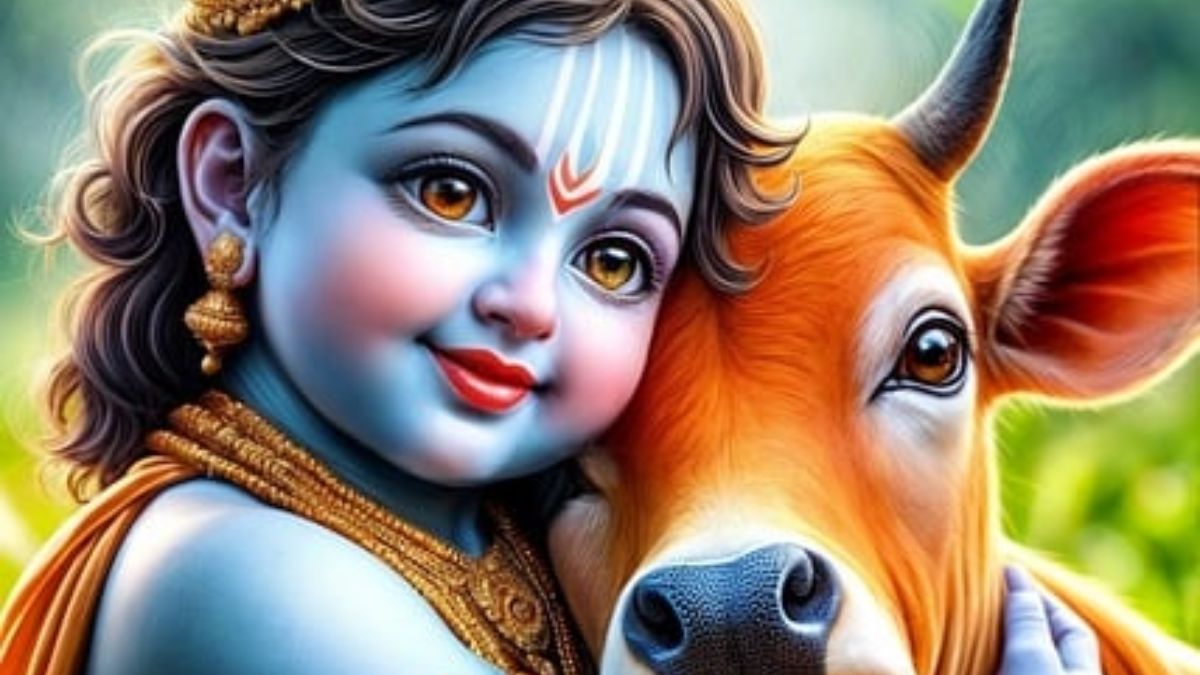Janmashtami, the celebration of Lord Krishna’s birth, is marked by a unique and cherished ritual—the offering of Chhappan Bhog, which translates to 56 different food items. This age-old tradition, performed at midnight, holds deep significance for devotees, and you’ll find this elaborate offering in many sweet shops during the festival.
But why do we offer Chhappan Bhog to Lord Krishna? According to tradition, these 56 items are prepared as a token of love and devotion, representing the various meals Lord Krishna is said to have missed while lifting the Govardhan Hill to protect the people of Vrindavan.
The Chhappan Bhog includes a variety of dishes like Makhan Mishri, Kheer, Rasgulla, Jalebi, Rabri, Malpua, Moong Dal Halwa, Ghevar, Peda, different types of nuts, Panchamrit, Shakkar Para, Mathri, various fruits like Mango, Banana, and Apple, as well as savory items like Pakodas, Curd, Rice, Kadhi, Cheela, and more.
The midnight celebration of Janmashtami is a deeply spiritual event, commemorating Krishna’s birth in a prison cell in Mathura. The festivities include singing devotional songs, chanting Krishna mantras, and performing aarti. The Bal Gopal idol is then bathed with panchamrit, dressed in new clothes and jewelry, and offered the prepared sweets. The prasad, which includes charanamrit and sweets, is later distributed to devotees.
Here is the list of the 56 Bhog items offered to Lord Krishna on Janmashtami:
- Makhan Mishri
- Kheer
- Rasgulla
- Cumin Laddu
- Jalebi
- Rabri
- Malpua
- Mohanbhog
- Moong Dal Halwa
- Ghevar
- Peda
- Cashew
- Almond
- Pistachio
- Cardamom
- Panchamrit
- Shakkar Para
- Mathri
- Chutney
- Murabba
- Mango
- Banana
- Grape
- Apple
- Plum
- Raisins
- Pakodas
- Vegetables
- Curd
- Rice
- Kadhi
- Cheela
- Papad
- Khichdi
- Brinjal Vegetable
- Dudhi Vegetable
- Puri
- Tikki
- Daliya
- Ghee
- Honey
- White Butter
- Fresh Cream
- Kachori
- Roti
- Coconut Water
- Almond Milk
- Buttermilk
- Shikanji
- Chana
- Sweet Rice
- Bhujia
- Betel Nut
- Fennel
- Paan
- Sweets
Janmashtami brings people from different backgrounds together, fostering a sense of unity and devotion. It’s also common for children to be dressed as Shri Krishna and Radha Rani, adding a joyful and colorful touch to the celebrations.


